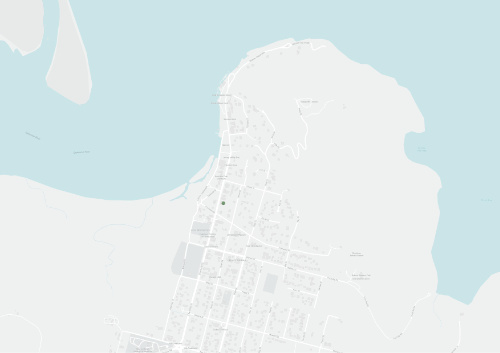Cape York Peninsula is a dream destination, the ultimate road-trip, for people who love four-wheel-driving, fishing and camping. Visitor numbers increase every year, and most take good care of the place. But a small minority are causing problems for other visitors, the region and its people.
Community Capacity & Resources
Related Content
An archive of Cape York NRM Newsletters before the migration to an online system.
Project Number: CY PA 13 - Crab Island
Project Name: Crab Island Flatback Turtles
Organisation: Cape York Peninsula Development Association
Project status: Funded by NHT
Amount provided: $13,800
Date started: April 2008 Date completed: December 2008
MATs from Cape York Peninsula NRM Plan: CB3.2; RA2.1; RA2.3; CB3.3; CB1.4
Summary
Cape York NRM have installed the last of three internet – enabled weather stations in Lakeland in order to provide the local producers with more reliable weather information to help them make important decisions around nutrient and water use.
Regional Extension Coordinator Oliver McConnachie, who is leading the initiative, said gathering weather information accurately at the local level and integrating it with Bureau of Meteorology data will lead to more reliable weather predictions.
Words Jessie Price-Decle and Juliana Foxlee | Photo Jessie Price-Decle
The three-year project saw graziers make changes to their land and grazing practices to improve land condition and water quality outcomes.
The project team, made up of Cape York NRM, South Cape York Catchments, and Department of Agriculture and Fisheries staff, worked across 20 properties over the life of the project.
South Cape York Catchments Grazing Project Officer Jessie Price-Decle said the project made a difference to water quality and land condition.
The Communities and coastal habitats of eastern Cape York will benefit from the Australian Government’s Reef Trust funded, Catchments to Coral program. Running from 2021–2023, the project will invest in a broad range of activities that focus on improving the health and resilience of eastern Cape York catchments and coastal ecosystems.
Cape York NRM’s Healthy Farming Futures project is working closely with Cape York’s pastoralists to help their businesses become more sustainable.
Co-led by Cape York NRM’s Regional Agriculture Land Facilitator Andrew Hartwig, the project sees graziers in western flowing catchments in Central Cape York increase the amount of ground cover on their properties to help reduce erosion, sediment run-off and improve water quality in the Gulf.
It also provides a pathway towards business sustainability.
Words Juliana Foxlee | Photo James Donaldson
Cape York NRM is partnering with Northern Gulf Resource Management Group to facilitate opportunities for Australian Indigenous people to showcase and share their cultural fire knowledge, establish a network of Indigenous fire practitioners and protect the habitat of threatened species.
In May, Northern Gulf RMG coordinated an on- country fire workshop at Talaroo Station in the northern Gulf area. The three - day event was hosted by the Ewamian Aboriginal Corporation.
Words and photo Robyn May
Rubber vine has been treated in the Laura region by Cape York Weeds and Feral Animals (CYWAFA) Inc. with support from Cape York NRM.
Cape York NRM Gully and Grazing Project Officer Michael Goddard said the project was all about restoring native ground cover and reducing erosion.
‘The Laura River Rubber Vine Control Project is reducing the amount of rubber vine growing along the waterways, allowing the return of native grasses and minimising soil loss during rain events,’ he explained.
Wetlands on Cape York are very important because they are a filter for water flowing from land to the Great Barrier Reef, they are a refuge and a breeding ground for many different animal species, and also home to many aquatic species, both plants and animals. Some threats to coastal wetlands are feral animals, erosion, pollution, fire, and loss of oxygen in the water from aquatic weeds. Along with the threats comes the problems or issues caused, such as a decrease in native animal and plant species and a decline in water quality.
Words Ben Lister and Robyn May
Who Plans Here is a Cape York NRM tool accessible on our website. The tool enables users to locate plans that are in place across the region. Plans are updated regularly, with over 150 plans currently available.
Plans that Cape York NRM has permission to share can be located by searching a selected area on the site’s Cape York map—plans within that selected area will be displayed. Users will then have the option to download, or to contact the plan owner for access.
Words and photo Robyn May
Cape York NRM welcomes the Queensland Government and Cook Shire Council’s investment in Gateway to the Cape—a travellers’ rest stop and information centre in Lakeland Downs.
Gateway to the Cape Project Manager Waratah Nicholls said the $1.2 m investment in the initiative was welcome news for the community.
Normanby catchment ‘Peer to Peer Grazing Group’ activities may have stalled during the coronavirus travel restriction period, but its Focus Farm initiative is going strong.
The Focus Farm initiative aims to assist land managers to achieve their goals with the assistance of a peer support group of farmers, and specialist service providers.
We want the Cape York Healthy Country Newsletter to include you—the Cape York community.
There are some very talented story tellers, artists, photographers, plus wonderful land manager projects, across the Cape community—and we have hundreds of readers who’d love to read, or see, your work.
Or maybe your school or community group has something exciting to showcase, or an event coming up that you’d like to promote more widely. They may be innovative online events!
Words and photo Jessie Price-Decle
Late season fires can destroy habitat, threaten property and livestock, and scorch groundcover leaving country vulnerable to erosion. Fighting fires is also a significant drain on people’s time and resources.
Laughter, friendship and even a few tears—Northern Gulf’s women’s events for 2020 kicked off in September with events in Mount Carbine and Walkamin, and concluded in Mount Surprise.
This year’s event, Bloom and Prosper, focussed on disaster preparedness and personal development, with participants gaining skills and knowledge to support their families and communities with disaster resilience.
The Mitchell River Watershed Management Group released this operational plan as a follow up from the business plan to take tasks identified therein and prioritise them, identify potential partners for projects, and setting measurable outcomes and appropriate times for completion of projects.
Jalunji-Warra Land and Sea Country
(excerpt)

